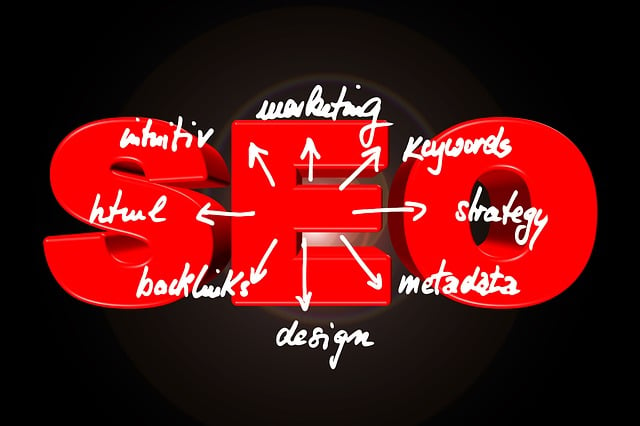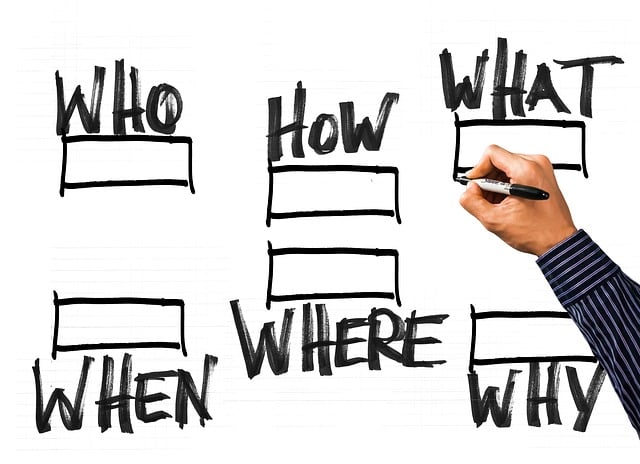HTML tag optimization guidelines
The Importance of Proper HTML Tag Optimization
Optimizing HTML tags plays a crucial role in enhancing a website’s visibility and search engine ranking. Proper structuring of heading tags not only aids search engines in understanding the content hierarchy but also improves the overall user experience. By utilizing heading tags efficiently, website owners can effectively communicate the relevance and importance of different sections within their content, making it easier for both users and search engines to navigate the site.
Implementing a strategic approach to HTML tag optimization involves more than just assigning tags based on aesthetics. It requires a careful consideration of content organization, keyword placement, and user engagement. By adhering to best practices and staying updated with the latest trends in HTML tag optimization, websites can improve their SEO performance and stay ahead of the competition.
Understanding the Role of Heading Tags in SEO
Heading tags play a crucial role in optimizing a website for search engines. By correctly structuring your content with H1 to H6 tags, you can provide search engine crawlers with a clear hierarchy of information on your webpage. This, in turn, helps search engines understand the relevance and context of your content, ultimately improving your website’s visibility in search results.
Proper utilization of heading tags not only benefits search engines but also enhances the user experience. Clear and organized headings make it easier for visitors to navigate your website and locate the information they are seeking. When heading tags are strategically used to highlight important content and break up text into digestible sections, users are more likely to engage with your site and find value in the information you provide.
Best Practices for Using H1 Tags
The proper use of H1 tags is crucial for optimizing your HTML content for search engines and ensuring effective communication of your page’s main topic. When implementing H1 tags, it is important to use them to clearly and concisely represent the primary subject matter of the page. Avoid stuffing H1 tags with irrelevant keywords or information that does not accurately reflect the content of the page. By focusing on providing a relevant and descriptive H1 tag, you can improve the usability of your webpage and enhance its visibility in search engine results.
Furthermore, it is recommended to use only one H1 tag per page to maintain consistency and clarity in your HTML structure. Using multiple H1 tags can confuse search engines and users about the main topic of your page, leading to a negative impact on your SEO efforts. By following this best practice and ensuring that each page has a unique and relevant H1 tag, you can enhance the readability and SEO performance of your content.
Utilizing H2 Tags for Subheadings
Headings are pivotal in organizing content and guiding readers through the structure of a webpage. When employing H2 tags for subheadings, it is crucial to maintain a hierarchical order that enhances the readability and flow of information. By using H2 tags for subheadings, content creators can segment the text into distinct sections, making it easier for users to scan and locate specific information efficiently. This strategic use of H2 tags not only aids in comprehension but also signals to search engines the importance of these subsections within the overall context of the page.
Furthermore, when implementing H2 tags for subheadings, it is essential to consider the relevance and coherence of the headings in relation to the content they introduce. Subheadings designated with H2 tags should accurately reflect the content that follows, providing a clear indication of what readers can expect within that section. By aligning the subheadings with the topic discussed, content creators foster a seamless user experience that encourages engagement and retention. Utilizing H2 tags for subheadings is not just about formatting; it is about enhancing the user’s journey through thoughtful and purposeful content organization.
Optimizing H3 Tags for Further Subsections
When it comes to optimizing H3 tags for further subsections on a webpage, it is essential to consider the hierarchy and structure of your content. H3 tags are typically used to break down content into more specific sections, allowing readers to navigate through the information easily. By utilizing descriptive and relevant keywords within your H3 tags, you not only assist search engines in understanding the context of your content but also improve the overall user experience.
When implementing H3 tags for further subsections, aim to maintain consistency in formatting and styling across your website to create a cohesive visual hierarchy. This consistency not only enhances the readability of your content but also reinforces the organizational structure for both search engines and users. Additionally, ensure that the content under each H3 tag is distinct and provides valuable information to the reader, aligning with the specific topic or subtopic identified by the heading. This strategic use of H3 tags contributes to improved SEO performance and helps in guiding visitors towards relevant sections within your content.
The Impact of H4 Tags on Content Organization
H4 tags play a significant role in enhancing content organization on webpages. When utilized effectively, these tags aid in establishing a hierarchical structure that guides users through the content seamlessly. By assigning relevant information to H4 tags, website visitors can easily identify subcategories within the content, improving overall readability and comprehension.
Implementing H4 tags strategically allows for the segmentation of content sections, enabling visitors to navigate through the webpage with clarity and purpose. By organizing information into distinct subsections using H4 tags, web designers can enhance the user experience and facilitate faster access to specific details. This structured approach not only benefits users but also contributes to improved search engine optimization by signaling the importance of various content segments to search engine algorithms.
Strategies for Implementing H5 Tags Effectively
When implementing H5 tags on your website, it is crucial to ensure that they are used strategically and effectively. H5 tags should be utilized to provide additional structure and organization to your content, particularly when there are subsections within a larger topic. By correctly implementing H5 tags, you can help both search engines and users navigate and understand the hierarchical structure of your webpage better.
To maximize the effectiveness of H5 tags, consider using them to break down complex information into more digestible sections. This can help improve the overall readability and user experience of your content. Additionally, incorporating relevant keywords within your H5 tags can further enhance the SEO performance of your website by signaling the importance of specific topics to search engine algorithms.
Maximizing SEO Potential with H6 Tags
H6 tags might seem insignificant in the hierarchy of heading tags, but when utilized effectively, they can significantly contribute to optimizing a website for search engines. These tags hold relevance for providing structure and further emphasizing specific content themes within a webpage. By strategically incorporating keywords into H6 tags, webmasters can enhance the overall SEO potential of their website.
In addition to aiding in keyword optimization, H6 tags play a crucial role in enhancing the overall user experience by providing clear delineation of content sections. When users navigate a webpage, the usage of H6 tags can guide them through the page’s content structure, making it easier for them to locate relevant information. By ensuring that H6 tags are implemented thoughtfully and cohesively with other heading tags, web developers can create a seamless and engaging browsing experience for visitors.
Avoiding Common Mistakes in HTML Tag Optimization
When it comes to HTML tag optimization, avoiding common mistakes is crucial for ensuring that your content is effectively indexed by search engines and enhances user experience. One common mistake is using heading tags solely for styling purposes without considering their semantic meaning. Each heading tag should accurately reflect the content it contains to provide clear structure for both search engines and readers.
Another mistake often made is using multiple H1 tags on a single page. The H1 tag holds significant weight in defining the main topic of the page, so it should be unique and relevant to the overall content. Using multiple H1 tags can confuse search engine crawlers and dilute the focus of your page’s primary message. It is advisable to reserve the H1 tag for the main heading of the page and use subsequent H2, H3, and other heading tags to structure the content hierarchically.
The Relationship Between Heading Tags and User Experience
Heading tags play a vital role not only in improving search engine rankings but also in enhancing user experience on a website. When utilized effectively, heading tags help visitors quickly navigate through content and understand the hierarchy of information presented. By using clear and descriptive headings, users can easily scan and locate the sections that are most relevant to them, leading to a positive browsing experience.
Incorporating heading tags strategically can significantly impact how users engage with a website. Properly structured headings can break up content into digestible sections, making it easier for visitors to consume information and find what they are looking for efficiently. Additionally, well-organized heading tags create a sense of cohesion and flow within a webpage, guiding users through the content in a logical manner. Ultimately, by prioritizing user experience through heading tag optimization, websites can drive increased engagement and satisfaction among their audience.
Incorporating Keywords in Heading Tags for SEO Benefits
Heading tags play a crucial role in on-page SEO optimization, and strategically incorporating relevant keywords can significantly boost the visibility and ranking of a webpage in search engine results. When selecting keywords for heading tags, it is essential to choose terms that accurately reflect the content of the section while also aligning with the overall SEO strategy. By including targeted keywords in heading tags, web developers and content creators can signal to search engines the primary topics covered within the page, making it easier for search crawlers to understand and index the content effectively.
Additionally, incorporating keywords in heading tags not only benefits SEO efforts but also enhances the user experience by providing visitors with clear signposts of what to expect in each section of the webpage. This alignment between user expectations and content delivery can lead to lower bounce rates and increased engagement, ultimately contributing to improved site authority and credibility. By carefully selecting and implementing relevant keywords in H1, H2, and other heading tags, website owners can create a more cohesive and optimized browsing experience for both search engines and human visitors.
Testing and Monitoring Heading Tag Performance
Testing and monitoring heading tag performance is crucial in ensuring that your website’s content is effectively organized and optimized for search engines. By regularly analyzing the performance of your heading tags, you can identify any areas that may need improvement and make necessary adjustments to enhance your SEO efforts. Tracking the click-through rates and user engagement with different heading tags can provide valuable insights into how your content is resonating with your audience.
Additionally, monitoring heading tag performance allows you to stay informed about any changes in search engine algorithms and adjust your strategies accordingly. By keeping a close eye on how your heading tags are performing in search results, you can make data-driven decisions to improve your website’s visibility and drive more traffic. Continuously testing and monitoring heading tag performance is an ongoing process that is essential for maintaining a strong SEO strategy and staying ahead of the competition.
Collaborating with Developers for HTML Tag Optimization
Developers play a crucial role in ensuring proper HTML tag optimization for improved SEO performance. Their expertise in implementing and structuring heading tags can significantly impact the overall visibility and ranking of a website on search engines. Collaborating with developers allows for a seamless integration of relevant heading tags throughout the website, aligning with the site’s content and SEO strategy.
When working with developers on HTML tag optimization, clear communication and a mutual understanding of SEO principles are essential. Developers should be briefed on the importance of heading tags in enhancing the user experience and signaling the hierarchy of content to search engines. By fostering a collaborative approach, both marketers and developers can work together to optimize heading tags effectively, contributing to the overall success of the website’s SEO efforts.
Ensuring Consistency Across Heading Tags
Consistency across heading tags is crucial for maintaining a well-organized and user-friendly website structure. When each heading tag is used consistently throughout a website, it not only helps search engines better understand the content hierarchy but also improves the overall user experience. By ensuring that H1 tags are consistently used for main headings, H2 tags for subheadings, and so forth, visitors can easily navigate and comprehend the information presented on the page.
In addition to maintaining consistency in the type of heading tags used, it is equally important to be consistent in the formatting and styling of these tags. This includes ensuring that headings are visually distinguishable from the rest of the content, whether through size, color, or font weight. Consistent styling helps create a sense of uniformity and coherence across the website, enhancing readability and aiding in the overall user engagement. By paying attention to both the usage and styling of heading tags, website owners can effectively convey the hierarchy of information while providing a seamless browsing experience for visitors.
Future Trends in HTML Tag Optimization
As technology and search engine algorithms continue to evolve, the future of HTML tag optimization is poised for significant advancements. One trend to watch out for is the integration of AI and machine learning capabilities to automate and streamline the process of heading tag optimization. These technologies can assist in identifying the most relevant and impactful heading tags to improve overall SEO performance.
Additionally, the rise of voice search and structured data markup is shaping the future landscape of HTML tag optimization. Heading tags will need to be optimized not only for traditional text-based searches but also to cater to voice queries and featured snippets. Embracing these emerging trends will be crucial for websites looking to stay ahead in search engine rankings and effectively communicate their content to users.






